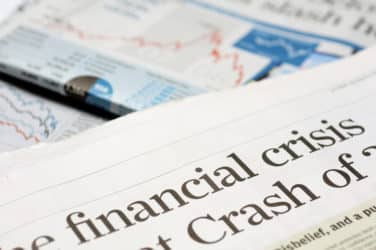
In a fragmented marketplace with numerous trading venues, finding the ‘other side’ of a block trade is the eternal challenge for institutional desks.
A seemingly underutilized tool to improve execution of these large orders, commonly defined as 10,000 shares minimum, is venue analysis. This is especially important for conditional venues, which allow traders to expand their liquidity search by placing the same full order in multiple pools — any given line remains in the water only on condition that none of the others have bites.
The ideal block trade would be an institution with, say, a 25K-share sell order dropping into a venue, only to find a peer that just recently arrived looking to buy 25K right around the same price. Planets align like that occasionally, but more often it’s an imperfect situation that requires time, finesse and perhaps creativity to efficiently execute a trade without broadcasting one’s intent beforehand.
Not all conditional venues are created equal. And in a highly dynamic marketplace, a venue’s relative suitability at 2 pm might be very different than it was at 10 am. And the situation might be different again at 2:30.

Joe Wald, Clearpool
“A conditional venue’s ultimate objective is to allow buyers and sellers to meet in size, in a way that minimizes information leakage,” said Joe Wald, chief executive officer of trading-technology provider Clearpool Group. “Who’s pulling it off right, and how do you as a trader find out whether you’re getting unique liquidity or liquidity that’s commoditized across different places? The only real answer is venue analysis.”
There are about a dozen conditional venues in the U.S. equity marketplace, run by some of the biggest dark-pool operators including Bank of America Merrill Lynch, BIDS Trading, ITG, J.P. Morgan, and UBS, plus a handful of buy-side-to-buy-side venues. As conditional orders have gained traction in recent years, brokers have tailored algorithms to this higher-touch type of trading, which market participants say needs more monitoring and updating compared with a non-conditional order.
While 38% of equity desks use transaction cost analysis to analyze trader effectiveness against benchmarks, just 9% of desks use TCA for venue analysis, according to a February 2018 Greenwich Associates report. The limited penetration means those brokers who effectively deploy venue analysis have a competitive advantage, Greenwich noted.
“Assessing the quality of the venues by understanding where your block orders are getting filled, the average trade sizes, and reversion, are essential metrics when it comes to customizing the routing protocol of your conditional venues,” said Clearpool’s Wald. “Utilizing venue analysis, in conjunction with TCA, allows you to differentiate with respect to execution quality. Clearpool is a financial technology company with no affiliation to exchanges, ATSs or single-dealer pools, so our product’s anonymized dataset is substantial, but also completely unbiased.”
BMO Capital Markets’ equity traders use venue analysis to evaluate the effectiveness and toxicity of execution venues and determine when and how to best utilize and operate within each venue. That’s according to Sean MacKenzie, Managing Director in Equity Products for BMO in New York.
Overall, venue analysis is improving as it becomes more detailed, informative and actionable. With regard to conditionality, venue analysis can quantify the value and costs of trading in each conditional venue, MacKenzie said.
“The bigger the order, the more important venue selection and utilization become,” he said. “Each venue is different and has its strengths, weaknesses and idiosyncrasies. Some venues work better for passive orders, some work better for midpoint orders and others for aggressive orders. Others work better for small-cap names while others work better for inter-listed shares.”
Clearpool analysis showed that in the first quarter of 2018, orders were distributed about evenly across the conditional venues, but shares executed were concentrated in three venues. By size, small-cap stocks represented 27% of shares traded, mid-cap represented 32%, and large-cap comprised 39%.
Trade orders that go to conditional venues average about 15,000 shares, Wald said; executions average about 8,700 shares, dwarfing the 200-share average trade found in the broader, ‘continuous’ market.
“Clearly there is value” in the much-larger trade size, Wald said. “The liquidity that people are looking for does exist. The question is, where do you go to find it?”






